‘He is malnourished’: Why Indonesia’s Papua suffers from food insecurity in spite of government intervention
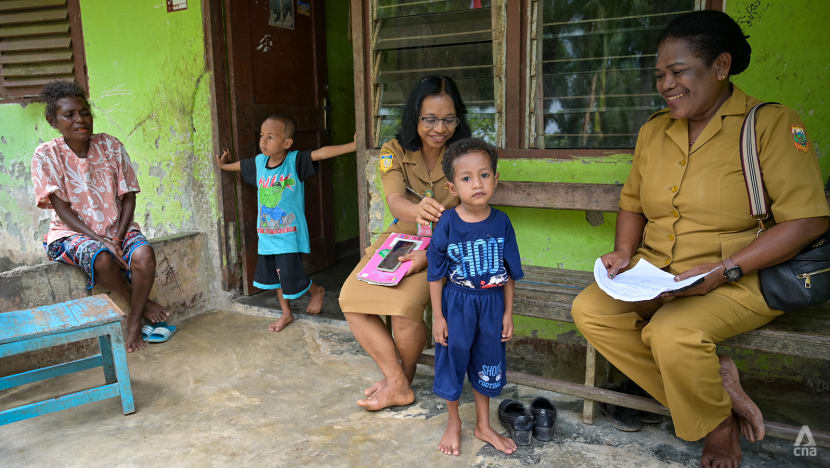
Officials from Keerom's health agency with Berto (centre), who suffers from stunting. (Photo: CNA/Danang Wisanggeni)
KEEROM, Papua: Playing together at home with his two cousins of roughly the same age, four-year-old Berto stands out.
Unlike his cousins - who appeared cheerful and playful with one another - Berto stood quietly in an oversized blue shirt when CNA visited his home in Workwana village located in the Keerom regency of Papua province at the end of August.
However, it was not the toddler’s demeanour which was most distinct.
It was his height of just about 90 cm - shorter than the average 100 cm for Indonesian children of his age - and the boy’s thin body that stood out, making him look fragile and small for a child his age.
“I knew he suffered from stunting since he was three years old,” said Mdm Yustina Warirowan, Berto’s 54-year-old grandmother.
“The local health clinic told me that he is malnourished.”
Mdm Yustina and her husband are Berto’s primary caregivers ever since the boy’s mother died from human immunodeficiency virus (HIV)-related complications when he was two years old, and his father lives in a different city.
The regency’s acting health agency head who was present during CNA’s visit said that stunting is a condition of impaired growth and development that is primarily caused by malnutrition.
And while the cause of malnutrition is multi-faceted, Dr Bernadette Ekasoeci said that a lack of availability of nutritious food contributes to the problem, and Papua - where four-year-old Berto lives - is struggling with food security issues.
.png?itok=X8Av02vY)
According to Indonesia’s health ministry, Papua has the third-highest number of stunting cases in the country, behind the provinces of East Nusa Tenggara and West Sulawesi.
Between April and June, Dr Bernadette and her team measured 2,932 toddlers, of whom 409 suffered from stunting.
They regularly make visits to the different villages under her purview to monitor people’s health and provide food aid. Compared to other parts of Papua, Keerom is considered to be resistant to food insecurity, according to Indonesia’s 2023 Food Security and Vulnerability Index.
According to the Food and Agriculture Organization of the United Nations, food security exists when all people, at all times, have physical and economic access to sufficient, safe and nutritious food to meet their dietary needs and food preferences for an active and healthy life.
And according to data from the country’s National Food Agency, while most parts of Indonesia are very resistant to food insecurity, this is not the case for many parts of Papua, the country’s easternmost island.
It is the only region in the archipelago that is “very susceptible” to food insecurity, and is listed on the government’s top priority list for food security. But experts whom CNA spoke to said that there are ways to tackle the issue, including using local traditional knowledge to increase food productivity.
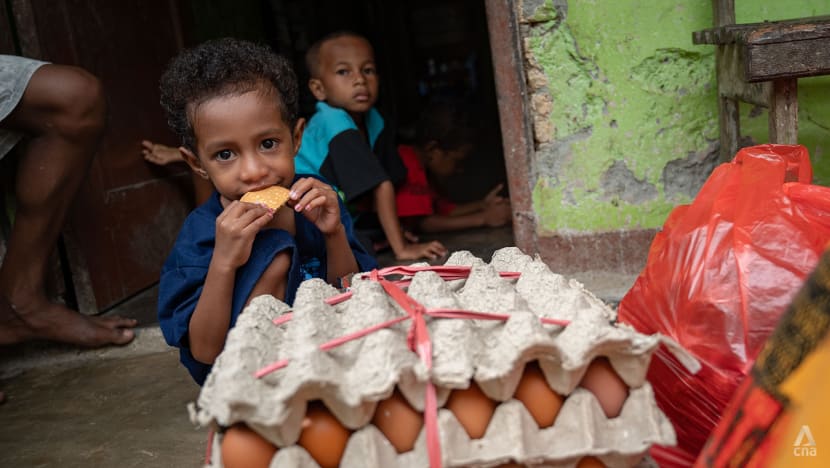
WHY PAPUA HAS FOOD SECURITY ISSUES
For a region to be resistant to food insecurity, it must fulfil three criteria, said Mdm Lunanka Daimboa, acting head of Papua province’s horticulture and food agency.
She explained that food must be available, that there needs to be access to food distribution networks and food must be utilised.
“If one criteria is not (fulfilled), it will affect everything, and a region will be prone to food insecurity,” said Mdm Lunanka.
“Regarding food availability in Papua itself, we know that the food is mostly produced and imported from outside (of Papua).”
Guidelines from the National Food Agency classify 21 commodities as essential food items, and these include rice, chicken, egg, beef, fish, corn, red bell pepper, garlic, cayenne pepper, sugar, and soybeans, among others.
Meanwhile, Mdm Lunanka stressed that access to food distribution networks is also challenging in Papua, given its geographical location on the very eastern side of Indonesia.
Economic development has mainly been on Java island, about 3,500km away, which is about the distance from Jakarta to Taiwan.
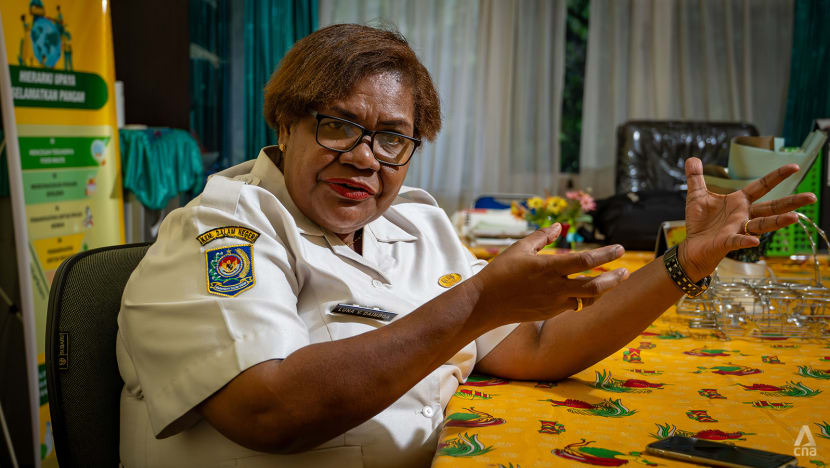
Food biochemistry lecturer Dr Vita Purnamasari from Papua’s Cendrawasih University concurred with Mdm Lunanka’s views, adding that Papua’s vast terrains - ranging from coastal areas to lowland rainforests, highlands, and rugged mountainous regions - make it difficult to ensure a reliable food distribution network.
Papua is divided into six provinces: Papua, West Papua, Southwest Papua, Central Papua, Papua Highlands, and South Papua.
There are at least 250 indigenous Papuan groups in Indonesia and many people live in remote areas.
“Why are some people in Papua still starving? Because Papua is geographically vast. There are mountains, some people have to walk for hours (to reach their destination), and some have to cross rivers two or three metres (wide) with rapid waters,” said Dr Vita.
“When people in such areas lack food and inform authorities about their situation, these are also the challenges authorities face to transport food aid swiftly.”
She added that the weather patterns there are also inconsistent, making farming and commuting tricky.
Infrastructure, such as roads to connect one area to another, is also limited in Papua, making the cost of transporting food high.
“The challenge is then the cost of transportation. Some areas are provincial food production centres, but the food produced cannot be distributed to areas facing a food deficit,” said Mdm Lunanka.
JOKOWI’S FOOD ESTATE
Meanwhile, outgoing President Joko Widodo's government has built food estates across Indonesia - including in Papua - to promote food self-sufficiency.
Food estates are food plantations that are usually run by local farmers and funded by the government. In Papua, the food estate is in the regency of Keerom, which was introduced in 2023.
While it is meant to serve the entire country, the corn food estate was to provide Papuans with better access to the crop and to enhance the income of local farmers.
It was built on 500 hectares of land that was once an oil palm plantation but is no longer productive.
The land was then converted into a cornfield due to its agricultural and economic potential.
When it was introduced in March last year, the target was for the food estate in Keerom to produce between four and five tonnes of corn per hectare during the first harvest season. Mr Widodo claimed three months later that the food estate had produced seven tonnes of corn per hectare of crop.
But the yield appears to have tapered off.
When CNA visited at the end of August, only a small proportion of the field was planted with corn. The rest was covered in wild plants, weeds and grass.
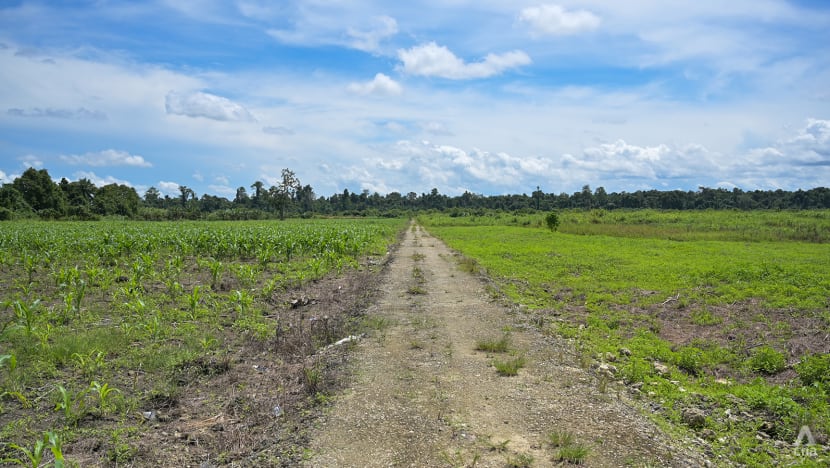
Farmer Finsen Abar, 50, told CNA that since he converted from being an oil palm farmer to a corn farmer a year ago, he has experienced harvest only once despite the commodity being able to be harvested once every three months typically.
Pests and a lack of access to insecticides and nitrogen fertilisers are among his biggest problems.
“Rats and birds are eating the corn. And I don’t have enough fertilisers. The government only gave us once,” said Mr Finsen.
He claimed he had told local officials about his challenges, but a solution has yet to be found.
As a result, Mr Finsen has had to grow and sell bananas - which is a local food that can be grown easily - to make ends meet.
Similarly, his daughter-in-law who is in the same profession as he is, has experienced crop failure due to flooding in the cornfield.
“The soil is not so good because it is a swamp. We have requested the government to build canals, but there has been no response,” said 31-year-old Yubelina Abar.
“We are actually glad that we have this food estate, but we are facing challenges.”

LOCAL SOLUTIONS
Mdm Lunanka from Papua’s horticulture and food agency acknowledges the shortcomings of the government’s food estate.
She said the farmers need to be backed by resources, but it takes time for the local government to get the budget for the food estate.
Once successful, the corn food estate could be more than just a means to grow food for the people, but also spur the creation of other related industries, said Mdm Lunanka.
For example, as corn is an ingredient in chicken feed, an animal feed factory could eventually be built to help Papua form a long-term sustainable food chain.
Despite the current situation, Dr Vita Purnamasari - the food biochemistry lecturer at Papua’s Cendrawasih University - is optimistic that solutions are available.
Based on her research for the past few years, she concluded that using local knowledge is the most feasible way to tackle food insecurity.
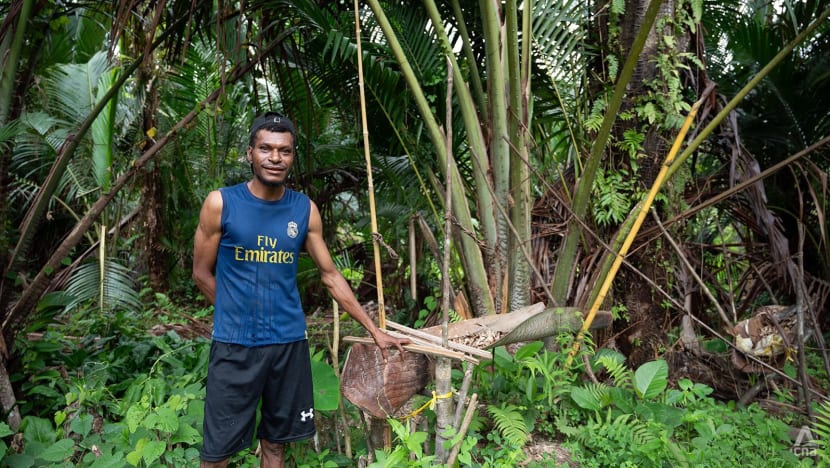
Finding local Papuan wisdom related to food preservation is an option to prevent people in remote areas from starving.
Dr Vita said that local food, such as sago and banana, which grow well in many parts of Papua, should be cultivated more intensively and be a staple food instead of instant noodles or rice.
“Sometimes the food aid given to the people is instant noodles. And this is also our concern.
“Our task now is to make local food part of food aid. Instant sago was once introduced, but because of the high production cost, it is perhaps not the best option,” she said.
Dr Vita said building more infrastructure to connect areas is also a solution, but this requires a lot of money and time.
“Every ethnic group has its own local knowledge (that can be tapped upon). This is key to preventing food insecurity,” surmised Dr Vita.

No comments
Share your thoughts! Tell us your name and class for a gift (: